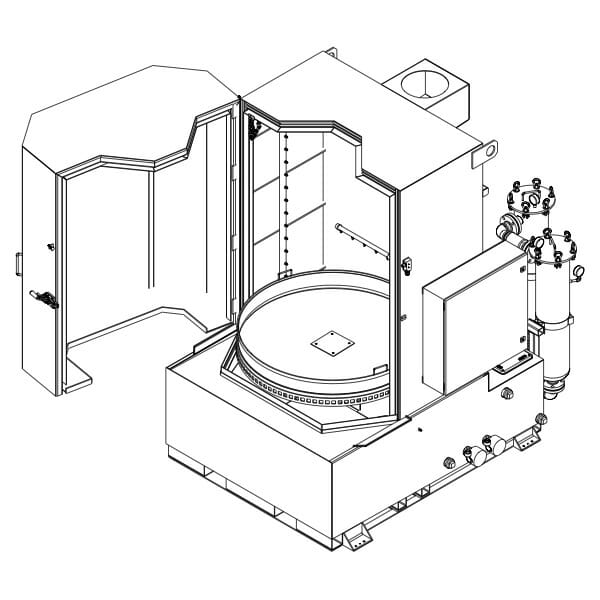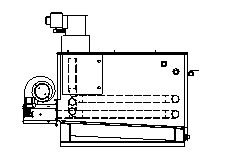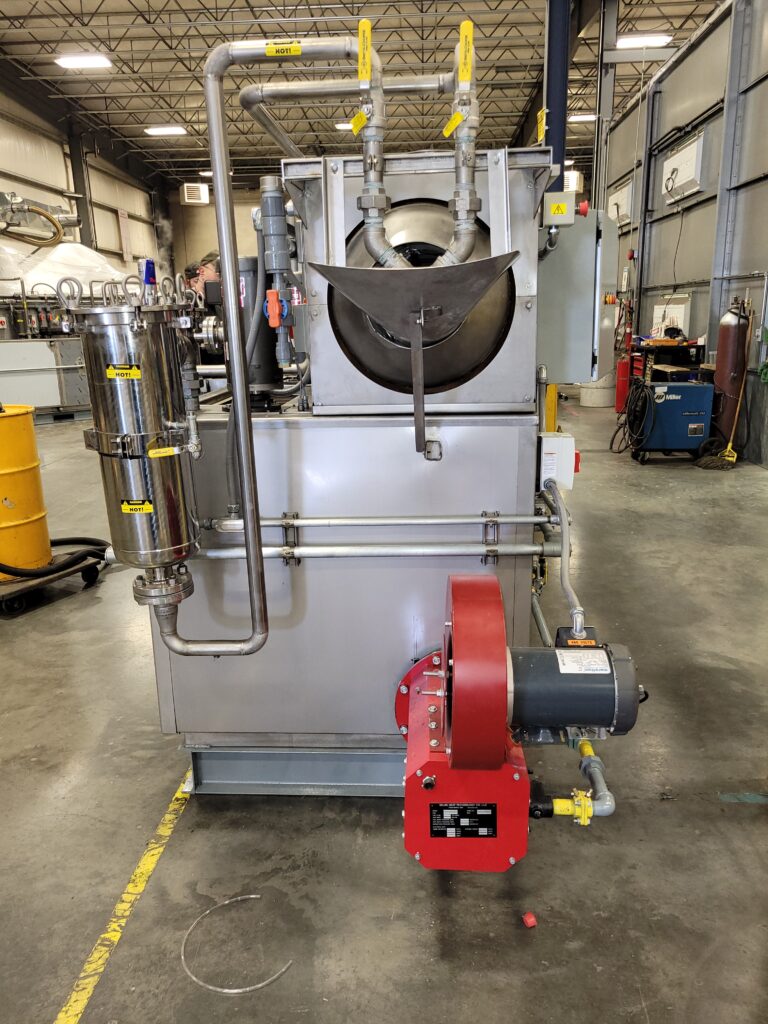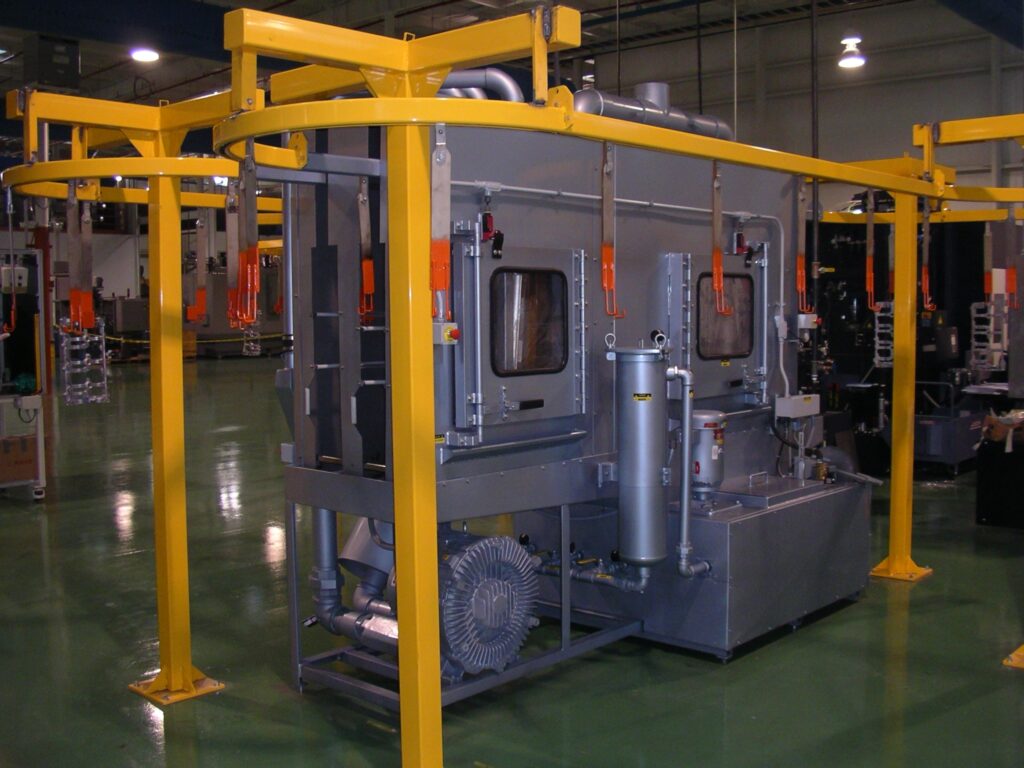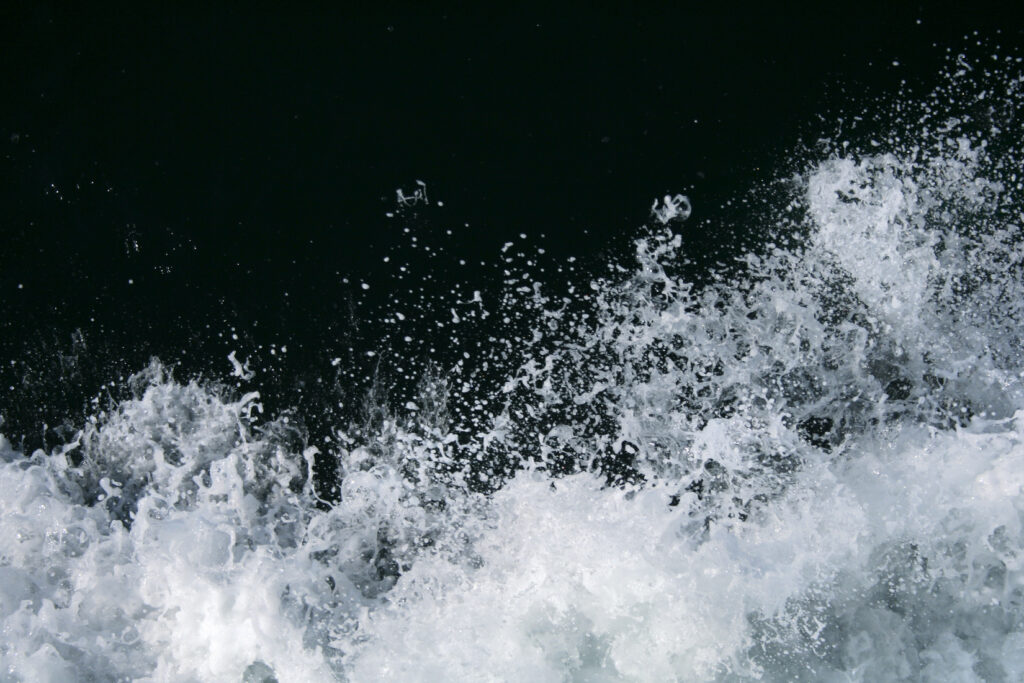Wash. Rinse. Repeat.
The age-old saying translates to aqueous parts washers too. Washing is the first step in the parts cleaning process, but rinsing is essential for optimal part cleanliness.
Parts are exposed to detergents during the aqueous cleaning process. Cleaning compounds help break down soils, but they may leave residue behind.
Rinsing removes residual detergents, chemicals and oils. A good rinse also sweeps off soils and particulates that the washing stage did not remove.
In this article, find out how to achieve a quality rinse and learn more about your rinse water options.
Jump to:
- 3 Reasons for Rinsing
- How to Get a Quality Rinse
- Rinse Water Options for Your Cleaning System
- How to Measure Rinse Water “Quality”
- 3 Rinse Water Systems
3 Reasons for Rinsing
You wouldn’t wash your hands without rinsing or leave detergent to dry on your clothes. The same goes for industrial parts cleaning. Rinsing is a crucial step that improves part appearance and cleanliness.
1. Appearance
Spotting and chemical hazing are common parts cleaning issues. Rinsing reduces the chance that either will appear on part surfaces.
Hard water deposits and residual detergents can cause spotting. Leftover oils and cleaning compounds can leave a chemical haze on part surfaces. Rinsing helps prevent both of these issues!
2. Surface Cleanliness
After washing, rinsing further improves cleanliness by removing fine particles and debris left from the manufacturing process.
Cleaning detergents can also leave behind particles and residue, skewing particle sizing. A rinse stage after washing ensures these solids get removed.
3. Surface Energy
When you remove oil and detergent remnants, you increase the substrate surface energy. This creates a higher molecular attraction, increasing the ability to bond with the substrate. You can measure the surface energy with dyne readings.
How to Get a Quality Rinse
Not all rinses are the same. A proper rinse is the only way to guarantee a spot-free finish on your components.
You can get a quality rinse by properly sizing the rinse exposure so that all wash water is displaced. If you use city water in your initial wash, properly sizing the rinse exposure is even more critical.
Every application and parts washer varies. Here’s an example of how an aqueous parts cleaning system works, from washing to rinsing. This example includes two wash tanks and two rinse tanks that recirculate water.
1. Wash Tank 1
It uses 3% to 5% detergent with DI water (deionized water).
2. Wash Tank 2
It uses 1% to 2% detergent with DI water.
3. Recirculating Rinse Tank 1
The DI water tank is reused until the microsiemens reaches above five. Once the value is reached, the second rinse kicks on, overflowing until the value is reached in Tank 1.
4. Recirculating Rinse Tank 2
The DI water tank is reused until the microsiemens reaches above three. When the value is reached, the water is added, overflowing the tank into the first rinse.
5. Optional: Adding a Final On-Demand Rinse
The DI water sprays a light rinse from the spray bar within the parts washer. The spray can either be directed to drain or flow into Rinse Tank 2. If it flows into Rinse Tank 2, it backflows into Rinse Tank 1, and from Rinse Tank 1 goes into the drain.
Rinse Water Options for Aqueous Parts Washers
When planning your rinsing stage, you must consider the water you’re using. The water you run through your rinse tank can affect the parts’ finish.
Quick Rinse: Go for City Water
City water is often hard water. Hard water leaves mineral deposits and water spots on surfaces. Some parts cleaning applications don’t require spot-free surfaces, so using city water meets the manufacturer’s needs.
Using hard water still yields a good appearance and helps reduce chemical haze. Some example applications that use city rinse water include:
- A quick rinse to remove chemical carryover.
- When a spot-free finish is not required.
- A secondary rinse with a lower concentration of detergent.
Hard water works well in applications with multiple rinses. Progressively decreasing strength cleaning stages with hard water could look like washing at 3%, rinsing at 2%, rinsing at 1% and then drying.
Spot-Free Finish: Choose DI & RO Water
DI or RO water will do the trick if you need spot-free surfaces.
DI (deionized) is purified water with almost all its mineral ions removed. The ions include sodium, calcium, iron, copper, chloride and sulfates. An industrial DI water system features resin tanks that exchange hydrogen and hydroxyl ions for dissolved minerals.
RO water is deionized through reverse osmosis. A pump pushes water through a semipermeable membrane in an industrial reverse osmosis system. As water flows through the filter, it removes contaminants. Higher-purity water may require multiple inline membranes and increase the waste stream.
Both of these water types are hungry for minerals. They can strip minerals from ferrous metals, which causes oxidation. Save pure DI and RO rinses for high-grade stainless steel, non-ferrous metals and oxidation-resistant substrates.
How to Measure Rinse Water Quality
Get that spot-free finish! Measuring water quality helps ensure you get a finish that meets your standards.
Both DI and RO effectively reduce the total dissolved solids (TDS). Rinse water with less than 20 TDS is considered “spot-free” water. There is potential to see spots at 25 TDS.
For spot-free applications, you can better measure water quality by measuring the water’s resistance and conductivity.
Resistance
You measure resistance in megohms (MΩ). Increasing measurements indicate that the purity of the water is improving. Water is “pure” at 18 MΩ at 25℃. That doesn’t mean your water has to meet that measurement!
A 1.0 to 0.2 MΩ is reasonable for most industrial parts washing applications. A reading of 0.2 MΩ is the minimum recommendation for a spot-free rinse applied for cosmetic purposes.
Keep in mind that temperature can affect your readings. Probes also need to be calibrated regularly for accurate measurements.
Conductivity
You can also measure conductivity to determine water quality. Conductivity is measured in microsiemens/centimeters (µS/cm) at 25℃.
“Pure” water at a resistance of 18 MΩ at 25℃ corresponds to a conductivity of 0.05 µS/cm at 25℃. A reasonable conductivity range for parts cleaning is 1.0 to 5.0 µS/cm at 25℃.
The highest reading is 5.0. Any reading below 5.0 µS/cm is the minimum recommendation for spot-free rinsing.
3 Rinse Water Systems: DI, RO or a Combination
DI System
Between DI and RO water, DI water is considered the purer of the two. You can get DI water as pure as 18 MΩ and 0.05 µS/cm at 25℃. However, the ranges listed in the sections above are best for industrial applications.
DI water is an on-demand system. In an industrial deionized water system, resin tanks exchange hydrogen and hydroxyl ions for dissolved minerals within the water.
Contaminants will exhaust the resin over time. If you have high mineral water sources, they will quickly exhaust the resins, causing more frequent changeovers.
RO System
RO water effectively reaches a purity level of 90% to 99%. It’s also capable of resistance and conductivity ranges of 1.0 to 0.2 MΩ and 1.0 to 5.0 µS/cm, respectively.
Obtaining water with higher purity levels may require several inline membranes. These systems often produce more waste for a small volume of purified water. The waste can be up to 20 gallons for every 1 gallon of purified rinse water.
Using an RO water system works best for middle to high-range water purity when water and disposal costs are low. System membranes also last a long time, so you cut down on the cost of regular replacements.
Water and disposal costs are low. System membranes also last a long time, so you cut down on the cost of regular replacements.
DI & RO Combination
Combining DI and RO systems to purify water is common in parts cleaning. First, the system uses the RO method to remove most of the total dissolved solids. The RO reservoir supplies water for the DI system, where resins will further deionize the water.
Implementing both methods achieves high-purity water consistently. Starting with RO helps reduce the impact on DI resin tanks, extending the life of the resin.
Get Insight from the Experts
Find out what rinse water system would work best for your application. Our team will guide you in the right direction based on the material you need to clean and the soils contaminating it.
Get started with aqueous cleaning. Talk to our team about designing a custom aqueous parts washer today.
Request a quote online or call our toll-free number at 800-524-9274.
…
This article was written by Joe Hubbert, the Director of Regional Sales at Jenfab Cleaning Solutions. Joe has an extensive background in manufacturing sales. He has worked within several industries, including automotive, aerospace, petroleum and parts cleaning.
Jenfab Cleaning Solutions is one of the largest parts washer manufacturers in the United States. The company has provided innovative custom cleaning solutions since 1960. Jenfab serves automotive, medical, ammunition, heavy equipment and aerospace manufacturers.



